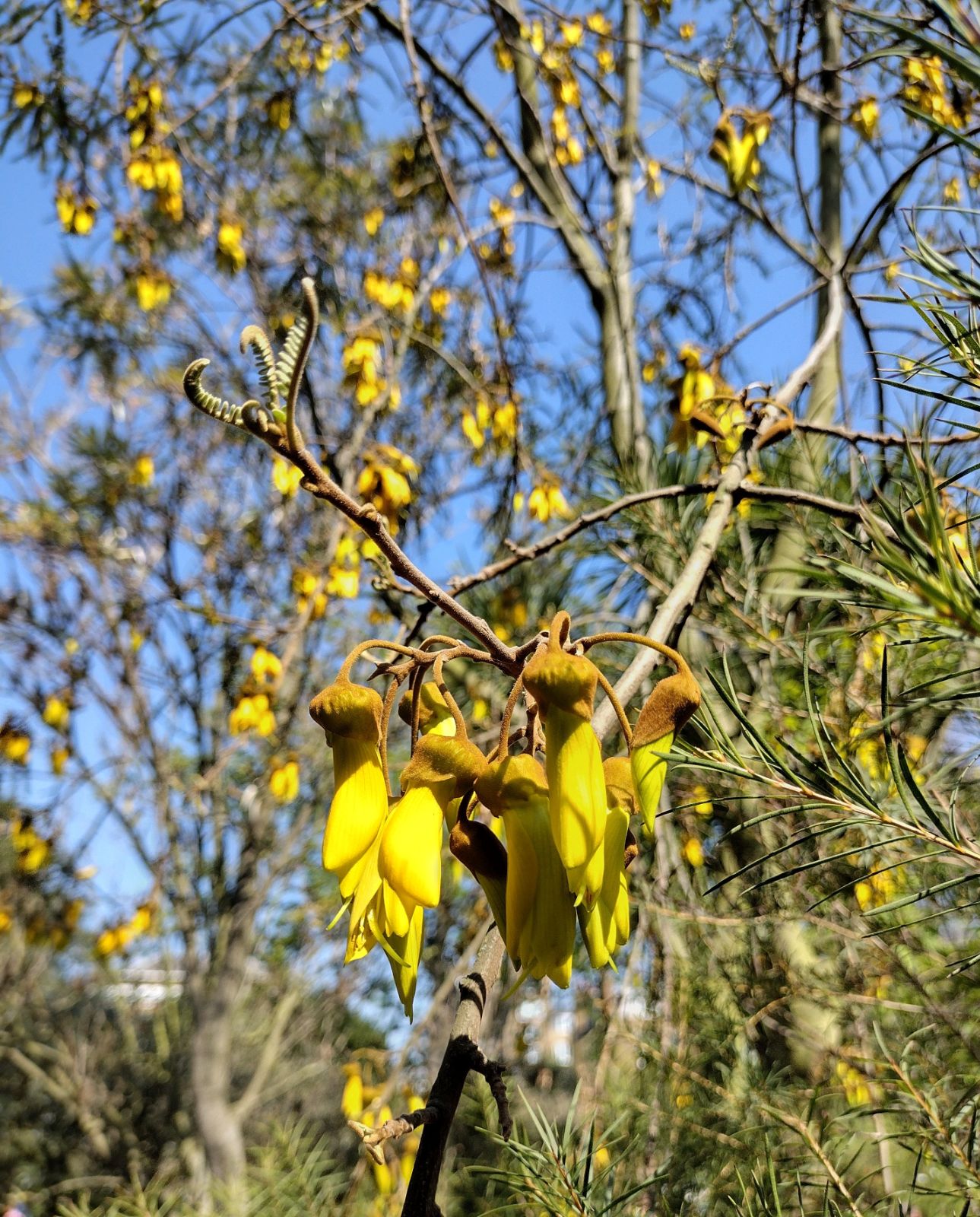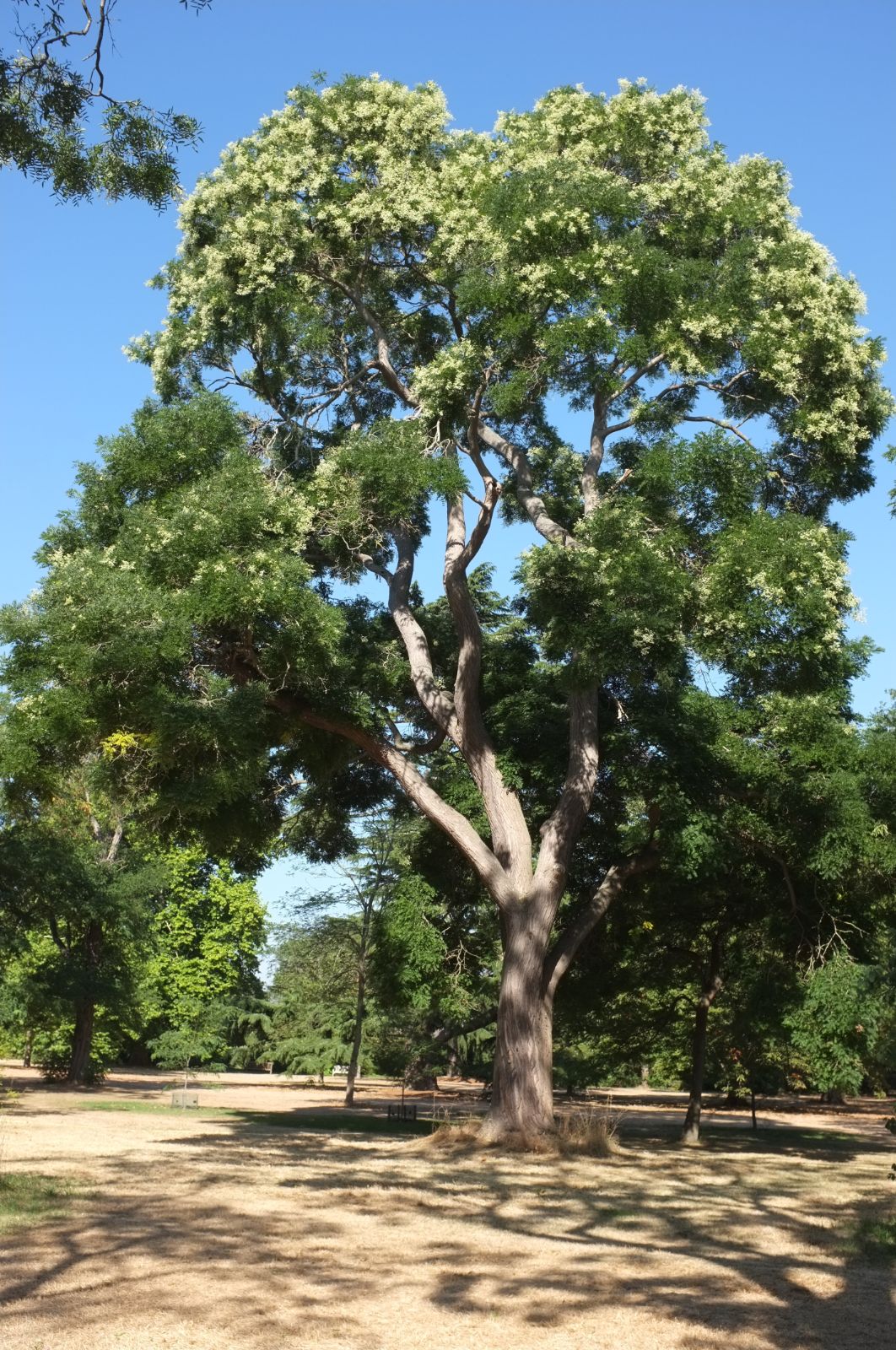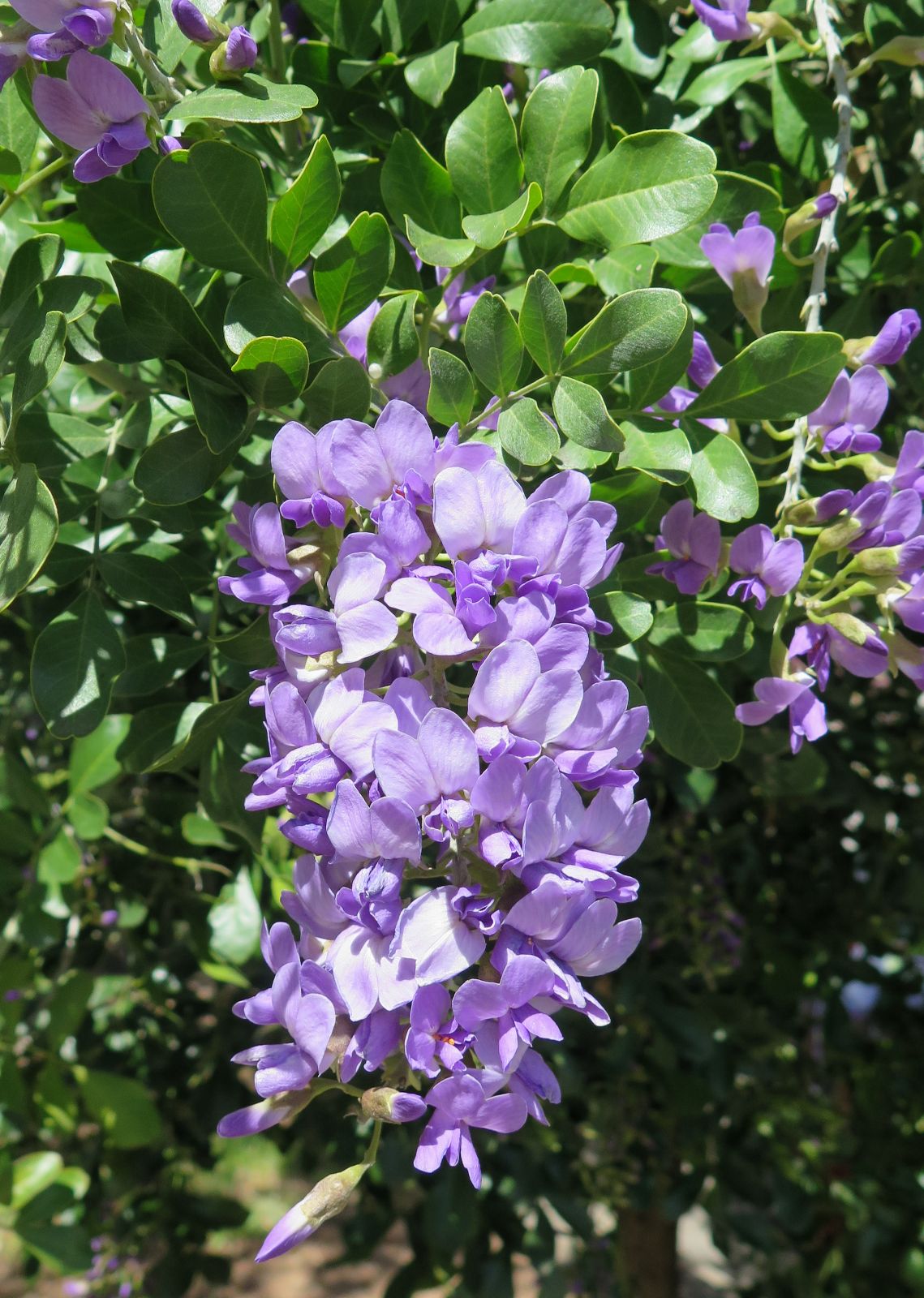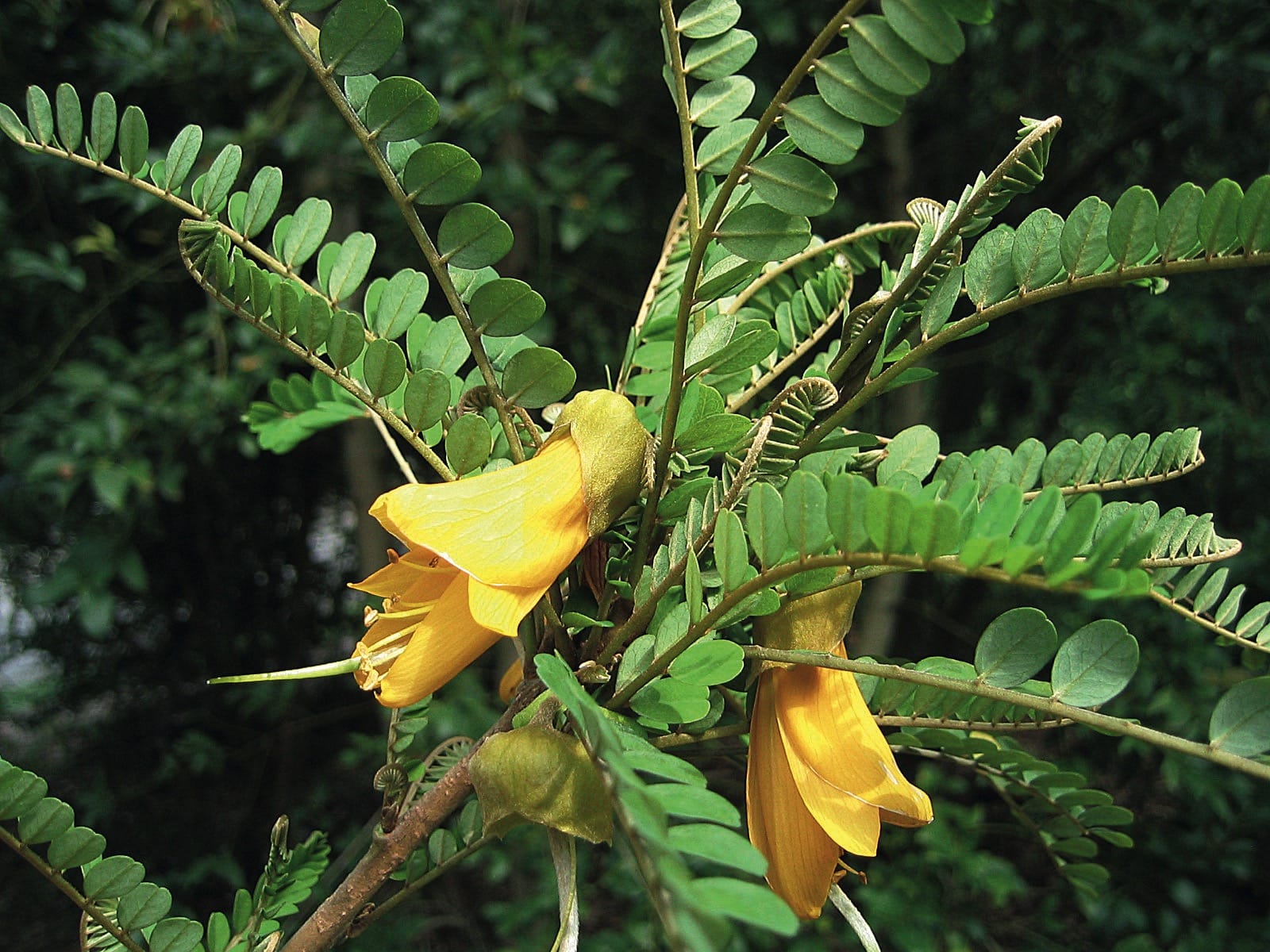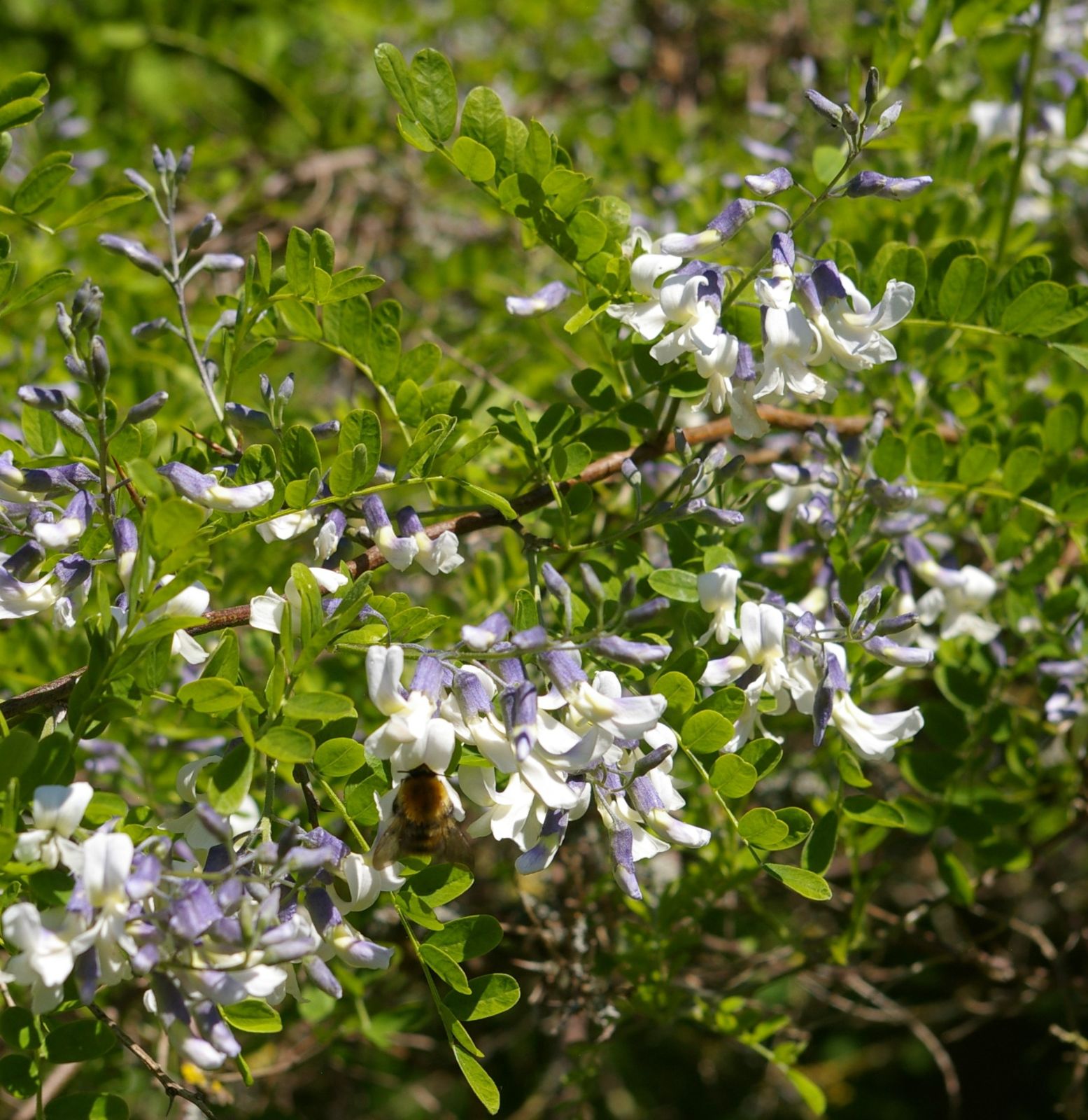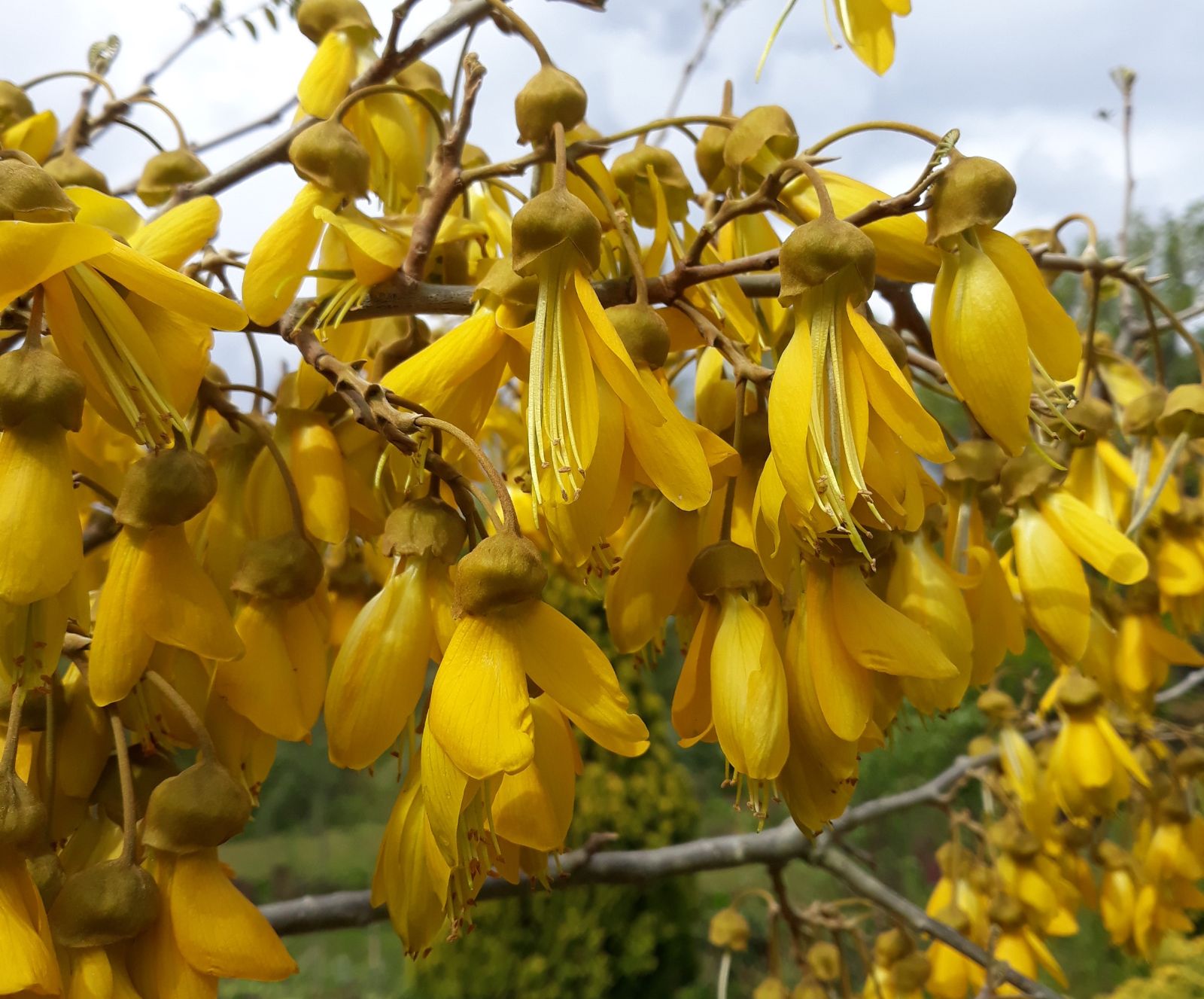Sophora
Credits
Article from Bean's Trees and Shrubs Hardy in the British Isles
Article from New Trees by John Grimshaw & Ross Bayton
Recommended citation
'Sophora' from the website Trees and Shrubs Online (treesandshrubsonline.
Family
- Leguminosae (Papilionoideae)
Common Names
- Kowhais
Synonyms
- Edwardsia Salisb.
Sophora is a medium-sized genus of approximately 50 species with a broad distribution in subtropical regions of the world. It is particularly diverse around the Pacific Ocean (Hurr et al. 1999), where it is often an important component of island vegetation: S. tetraptera (Kowhai) blossom is the national flower of New Zealand, while S. toromiro (Philippi) Skottsb. (Toromiro) was the only native timber tree suitable for house-building and carving on Easter Island – at one time reduced to a single specimen, and now the subject of intensive conservation action (Maunder et al. 2000). Sophora species are unarmed, small to medium trees and shrubs, or rarely herbs. The leaves are deciduous or evergreen and imparipinnate. The leaflets are entire, small and numerous, or few and large. Stipules are small and caducous. Inflorescences are simple, terminal racemes or panicles. The flowers are yellow and 5-merous; standard petals are broad and erect or reflexed, wing petals are free, and keel petals are overlapping or partially fused. The leguminous fruit is cylindrical or moniliform, rarely winged, and may be fleshy, woody or leathery; the pods are indehiscent or open slowly (Allen & Allen 1981).
The formerly large and diverse genus Sophora has been under botanical scrutiny in recent years, and on the basis of morphological, genetic and chemical evidence has been split into three rather distantly related genera, the other two being Calia Teran & Berland. and Styphnolobium Schott (Pennington & Wojciechowski 2008). Calia contains four species of small trees and shrubs from the arid areas of the southwestern United States to central Mexico, including the popular C. arizonica (S. Wats) Yakovlev, and C. secundiflora (Ortega) Yakovlev with purplish flowers. Calia are widely cultivated as ornamentals in arid parts of the southern United States and various selections have been made for foliage qualities (ranging from green to silver) and flower colour. Styphnolobium turns out to be closely related to Cladrastis Raf., which it resembles in being found in both southeastern Asia and the eastern side of North and Central America south to Colombia; its nine members include the familiar S. japonicum (L.) Schott and S. affine (Torr. & A. Gray) Walp.
The remnant Sophora (about 50 species) includes the majority of the horticulturally familiar species, including the popular S. microphylla and its relatives S. prostrata and S. tetraptera from New Zealand, and the Chilean taxa. In New Zealand several further species of Sophora have been recognised recently, their identities having previously been lost under the blanket name of S. microphylla. Each has a recognisable morphology and distinct distribution, raising important conservation concerns regarding the planting of appropriately native kowhais in those areas (Heenan et al. 2001, Heenan 2004). Some are in cultivation under these new names, including S. chathamica Cockayne, S. fulvida (Allan) Heenan & de Lange, the tender S. howinsula (W.R.B. Oliver) P.S. Green (Green et al. 2002), S. longicarinata G. Simpson & J.S. Thomson, and S. molloyi Heenan & de Lange. Cultivars belonging to several of these taxa have been selected in New Zealand but most have not as yet been distributed further afield (Hughes 2002). A selection of S. molloyi, ‘Dragon’s Gold’, has become quite widely available in commerce. This originated from seed collected in the 1950s by R. Veitch of the New Zealand Wildlife Division, on Stephens Island in the Cook Strait – a haunt of the curious tuatara reptiles, which later suggested the name. The clone was selected from this material by Terry Hatch of Joy Plants, Pukekohe, New Zealand (Hughes 2002). It was introduced to the northern hemisphere in 1985 by Graham Hutchins of County Park Nursery, Hornchurch, Essex (Hillier & Coombes 2002). It is usually a compact shrub, but with age can reach 6 m, with fine foliage, each leaf having up to 31 leaflets. Its lemon-yellow flowers are produced in late winter and early spring. Another species not known to be in cultivation, in the northern hemisphere at least, is S. godleyi Heenan & de Lange, but pendulous cultivars have been selected in New Zealand (Hughes 2002). Various cultivars are attributed to S. microphylla in the horticultural literature and nursery catalogues, but in view of the recent segregates these should probably be re-examined. A key to the New Zealand taxa (as wild plants, with a caveat over hybridity in cultivation) is available (Heenan 2004).
Sophora are not difficult to grow in good well-drained soil, but need some shelter from cold winds. Propagation is from seed, with abrasion of the testa and a preliminary warm-water soak being advisable; or from cuttings.
Bean’s Trees and Shrubs
Sophora
A genus of about eighty species of trees, shrubs, subshrubs and perennial herbs, scattered over the world. Leaves odd-pinnate, usually with numerous leaflets. Flowers in racemes or panicles, sometimes solitary. Corolla composed of standard, wings and keel, but not obviously of the pea-flower shape in S. tetraptera and its allies. Stamens free or almost so. Ovary stalked. Pods constricted between the seeds, hence necklace-shaped (moniliform), usually fleshy or woody and indehiscent. The cultivated species fall into two well-marked groups, the first represented by S. japonica, whose flowers are pea-shaped (papilionaceous) and the second by S. tetraptera and its allies (the Edwardsia group), in which the papilionaceous form of the corolla is obscured owing to the petals pointing forward. The latter group has a remarkable distribution: Lord Howe Island; New Zealand and Chatham Island; Hawaii; Easter Island; Juan Fernandez Islands; temperate S. America; Réunion (in the Mascarene group of islands). Thus the group is predominantly insular in distribution and only in New Zealand and Chile is it found more than a few miles from the ocean. See further in: Good, Geography of Flowering Plants (1953), p. 117 and fig. 34).
The generic name Sophora was originally applied by Linnaeus to S. alopecuroides, an herbaceous perennial mainly of W. Asia but extending into S.E. Russia and the Crimea, sophora or sophera being, according to him, an ‘ancient’ name for some similar plant. It is in fact an Arab name, probably for the plant that Linnaeus later named Cassia sophera. The rendering Sophora for the present genus allowed him to make a pun. For he remarked that the name could also signify ‘of the wise men’ (sophorum), since it brought ‘knowledge and warning’ that plants which combine papilionaceous flowers with free stamens, as in Sophora, could not be regarded as forming a distinct class (Hort. Cliff. (1737). p. 156). Because of its ten free stamens and single pistil he placed Sophora in his Decandria Monogynia, where it is associated with many genera quite unrelated to the Leguminosae, among them Rhododendron. The majority of pea-flowered genera of the Leguminosae have all the ten stamens, or nine of them, more or less connate, and those known to Linnaeus were placed in his Diadelphia Decandria.

